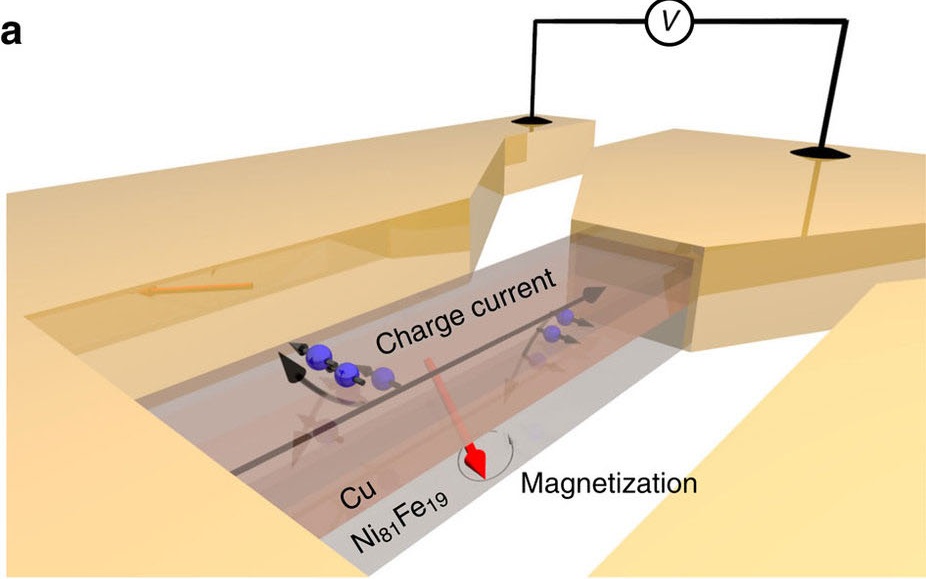銅の自然酸化によって設計されたスピントルク生成源
Spin–torque generator engineered by natural oxidation of Cu
2016年10月11日 Nature Communications 7 : 13069 doi: 10.1038/ncomms13069

スピンホール効果は、スピン軌道結合現象であり、スピン流の電気的生成と検出を可能にする。この相対論的効果は、スピントルクによる磁化の電気的操作に基づく高効率スピントロニクスデバイスを実現する方法をもたらす。しかし、スピントルク生成には重金属が不可欠と考えられてきた。今回我々は、スピン軌道結合が弱い軽金属である銅を自然酸化することによって、スピンホール効果が顕著に増強されることを示す。我々は、表面酸化を調節することによって、Cu/Ni81Fe19二層膜におけるスピントルク生成効率が2桁以上高くなり、Pt/強磁性金属二層膜の効率に達することを実証している。この研究結果は、スピンホール効果において酸化が重要な役割を果たすことを示すとともに、重金属を使用せず酸素制御と磁化操作によってスピントルク生成源を設計するという目標に向けて道を開くものである。
Corresponding Author
The spin Hall effect is a spin–orbit coupling phenomenon, which enables electric generation and detection of spin currents. This relativistic effect provides a way for realizing efficient spintronic devices based on electric manipulation of magnetization through spin torque. However, it has been believed that heavy metals are indispensable for the spin–torque generation. Here we show that the spin Hall effect in Cu, a light metal with weak spin–orbit coupling, is significantly enhanced through natural oxidation. We demonstrate that the spin–torque generation efficiency of a Cu/Ni81Fe19 bilayer is enhanced by over two orders of magnitude by tuning the surface oxidation, reaching the efficiency of Pt/ferromagnetic metal bilayers. This finding illustrates a crucial role of oxidation in the spin Hall effect, opening a route for engineering the spin–torque generator by oxygen control and manipulating magnetization without using heavy metals.

